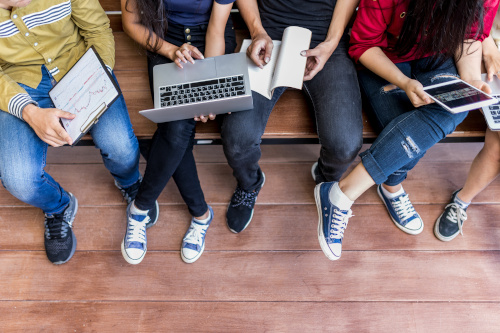As millions more Americans are vaccinated against COVID-19 every day, many are now wondering what society will look like in a post-COVID world. While the virus may stay with us in some form, many things will go back to normal. However, it’s less certain which of the adaptations we’ve collectively made over the previous year will fade along with the virus, and which might represent a “new normal” that we’ll take with us into the future. The American educational system, having seen dramatic impacts to educators, parents, and students as a result of the virus, is no different.
COVID-19 has represented a tremendous hardship for millions of Americans. However, that doesn’t mean that some good won’t come out of it, particularly as it relates to our students’ education. Over the past year, my organization, the Foundation for Teaching Economics (FTE), has reacted, experimented, and adapted to the realities of education in the time of COVID-19, in order to fulfill our mission of providing economics classes and curriculum to high school teachers and students.
Our experience points to three positive trends COVID-19 has set in motion within the American education system: educators will become more receptive to innovation, students will be able to access learning opportunities with fewer barriers than before, and educators will have more online tools to connect with their students.
Education should be first and foremost about the student’s learning experience and outcomes. However, innovation in public education that benefits student learning has tended to come in fits and starts. COVID-19, by forcing almost all public schools online, supercharged the dissemination of beneficial learning technologies throughout the country. As daily instruction moved out of the classroom and into the home, it forced us to be more thoughtful about using these new tools to meet students where they are, rather than asking them to adapt to pre-existing methods. We now have more opportunities to individualize instruction, rather than defaulting to a one-size-fits-all approach. We are also more aware of the obstacles that sometimes trip up students seeking a quality education— whether related to a lack of parental support or a bad internet connection at home—and seeking solutions to these challenges.
Fortunately, the pandemic has also opened up more opportunities for students to engage with education than ever before. Virtual education is less wedded to a specific location or certain times of the day, meaning that students don’t always need to be physically in the classroom each and every day. At FTE, the virtual element allows us to serve more students and teachers from all over the country, creating a more diverse student body, thanks to reduced travel costs. Of course, challenges remain with online education. Some subjects, like physical education, are awkward when taught remotely and the lack of in-person interaction can lead to students feeling socially isolated and lonely. We must remember that the internet is not a substitute for education; to use it effectively, teachers need support in mastering the tools of online education.
Because of these challenges, educators have learned to be more effective in communicating and connecting with students online. Prior to COVID-19, virtual education was less than widespread— meaning that some educators were naturally worried whether their style would work virtually. At FTE, we’ve now introduced more than a thousand teachers to resources on how to use technology to make their virtual economics classroom more interactive and interesting. Online platforms, such as Nearpod or Pear Deck, enable teachers make their presentations interactive and provide the means to check student understanding in real-time. This real-time feedback and use of activities can be a game-changer as educators constantly look to connect with students in their virtual classrooms.
The American educational system has sometimes been criticized for being resistant to change. Fortunately, the past year has shown that the system is capable of adopting incredibly innovative solutions, including a dramatic increase in the use of technology, in order to meet the needs of our students. While technology and virtual education isn’t a panacea, as we now approach a return to normalcy, I hope that educators, parents, and children will maintain the open-minded approach that proved so vital over the past year. If we can lock in the lessons of COVID-19, the system as a whole will be all the better for it going forward.
- Motivating students using the Self-Determination Theory - April 17, 2024
- Michigan Virtual’s statewide workgroup releasing AI guidance for K-12 educators - April 17, 2024
- 5 obstacles AI can help schools overcome - April 16, 2024

